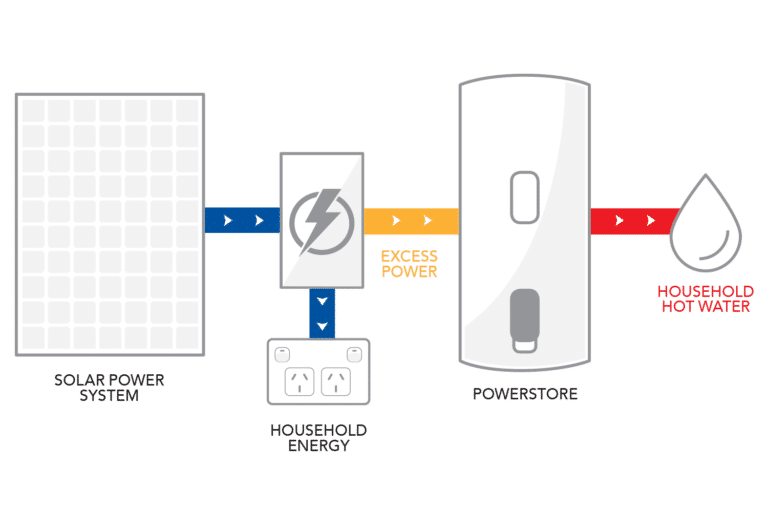Subscribing to off-peak hot water used to mean heating your water at night when electricity prices were at their lowest. Today, with rooftop solar pouring into homes and overflowing into the grid when the sun is highest, the cheap energy tide has been turned. A new trial by the Australian Renewable Energy Agency (ARENA) and Solahart will take active control of 2,400 residential hot water systems in renewables-endowed South Australia, to help balance the grid, but also to reduce residential electricity bills.
The trial is supported by both the Australian federal government (through ARENA) and the South Australian government. They are each contributing AUD 1.98 million ($1.5 million) to the AUD 9.9 million Active Hot Water Control project, conducted by Rheem via its renewable energy brand, Solahart.
Participating homes will be kitted out with Solahart PowerStore, a solar-smart, grid-interactive electric water heater. It will be integrated with a home energy management system to demonstrate a low-cost, scalable way for hot water systems to provide demand management services.
The Solahart PowerStore system typically works in tandem with a property’s rooftop solar system, using solar energy surplus to the household’s immediate needs to gradually heat water, rather than allowing that excess to flow to the grid. Solahart describes it as being like a battery: “It stores energy, but it’s more affordable.”
For homes without solar, it will likely be reconfigured to tap into times of cheapest grid energy supply – that is, when the grid is flooded with solar-generated energy.
“As more of Australia’s electricity comes from solar, we need to increasingly shift more of our energy consumption to daylight hours when solar PV is generating,” said ARENA CEO Darren Miller.
In preparation for this summer, South Australia, which already has one in three households living under rooftop solar, rushed in emergency measures that would allow state distribution network provider (DNSP) SA Power to switch off large amounts of rooftop generation if the influx of energy became too much for the grid to handle.
Hot water systems have traditionally been significant users of electricity in the early mornings and evenings, when the largest proportion of people are showering pre or post work, washing dishes and setting a load of laundry in motion. Helping householders to choose to switch when they heat their water and use other appliances at peak solar times is a more rewarding way to balance the system than enforced shutdowns.
The Active Hot Water Control project will trial various incentives to find out what motivates different customers — those with and without solar on the roof, and across socioeconomic groups — to participate in demand response. As part of the project, Solahart will establish a virtual power plant that aggregates the electrical load of hot water heaters among participants, curbs electricity use at peak times, participates in electricity price arbitrage, and provides network services to the grid.
To continue reading, please visit our pv magazine Australia website.
This content is protected by copyright and may not be reused. If you want to cooperate with us and would like to reuse some of our content, please contact: editors@pv-magazine.com.




By submitting this form you agree to pv magazine using your data for the purposes of publishing your comment.
Your personal data will only be disclosed or otherwise transmitted to third parties for the purposes of spam filtering or if this is necessary for technical maintenance of the website. Any other transfer to third parties will not take place unless this is justified on the basis of applicable data protection regulations or if pv magazine is legally obliged to do so.
You may revoke this consent at any time with effect for the future, in which case your personal data will be deleted immediately. Otherwise, your data will be deleted if pv magazine has processed your request or the purpose of data storage is fulfilled.
Further information on data privacy can be found in our Data Protection Policy.